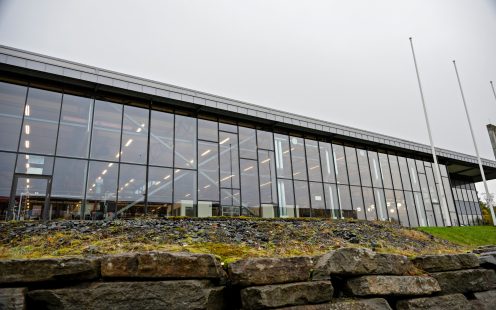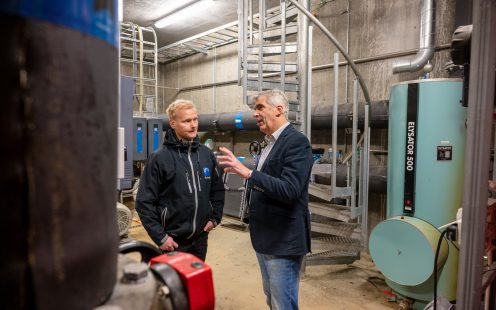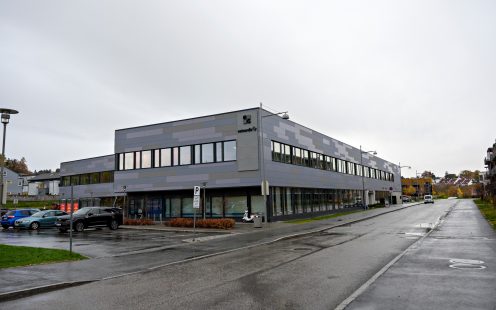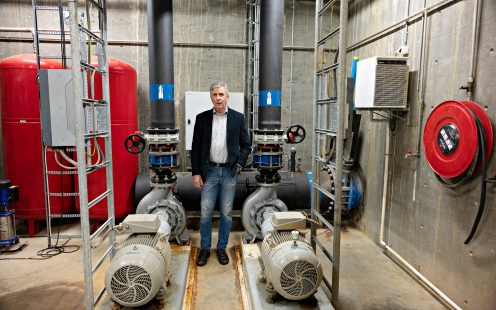Seawater Heating and Cooling: A Recently Built District in Norway Saves Millions of Kilowatt Hours
The growing Grilstad Marina community in Trondheim boasts a quiet and scenic location by the fjord combined with state-of-the-art facilities and infrastructure. Among the solutions implied is a highly energy-efficient seawater cooling and heating system. The innovative solution, designed and supplied by Pipelife's brand QPS, maintains pleasant indoor temperatures at Grilstad Marina's commercial area and has saved millions of kilowatt hours compared to conventional climate control technologies.

A New Wave in District Heating and Cooling
The Grilstad Marina is a unique district in Trondheim, Norway, set on an artificially built peninsula and surrounded by a fjord. Merging an urban beat with a strong presence of nature, the district comprises 632 residential units covering 67,500 square meters and an additional 134,000 square meters of commercial space. The latter area relies on the renewable energy of seawater for its heating and cooling needs.
The innovative seawater power plant was designed by Pipelife's brand QPS; the company also supplied the pumps, supply pipes, sensors and automatics, offering a complete solution to the investor of Grilstad Marina’s commercial area Koteng Eiendom.
Rune Solberg, Energy Manager at Koteng Eiendom, is happy to show the plant and explain how it works.
"We collect seawater at a depth of 60 meters from the fjord just outside Grilstad Marina. Here, the water stays around 8 degrees throughout the year. With the help of heat pumps, heat is obtained from the seawater in winter, while in summer, we use the seawater for cooling. In this way, we get very energy-efficient buildings," he says.
The seawater power plant was installed in 2012-2013. Since then, it has proved not only to provide a pleasant indoor climate year-round but also to bring significant energy savings. As much as 95% of the energy needs of the commercial area are produced by seawater.
"On some buildings, we have saved even 1.5 million kilowatt hours," states Solberg. "In total, we have reduced the proportion of kilowatts purchased by three to four million in a period of five to six years."

Saving on Energy Consumption
While the Norwegian coast is warmed by the Gulf Stream and many of the country's large-scale properties are located nearshore, the renewable energy provided by seawater currently is used to a relatively small extent.
Arvid Engløkk, Project Manager at QPS, firmly believes in seawater energy's potential when it comes to sustainable heating and cooling solutions. Sourced from the depths of the sea, seawater can provide a stable and economical source for heat pumps during the coldest months and cool down buildings when the temperatures rise.
"The higher the energy requirements of the premises are, the more economical seawater heating and cooling becomes. The greatest savings are made by commercial spaces and industrial areas that need extensive cooling, but seawater systems offer an economical solution for various types of buildings," Engløkk sums up.


Embracing The Full Potential of Seawater Energy
Over the years, Pipelife's brand QPS has become an expert when it comes to seawater energy systems. The company has extensive experience in designing powerplants, as well as supplying the necessary pumps, pumping stations, valves, piping, and data control systems, offering end-to-end solutions for its customers.
"The energy that we harness comes from the Caribbean Sea where the Gulf Stream starts. Even during winter, the waters on the Norwegian coast stay at plus 6 degrees," Engløkk explains. "I think we're building too many water-front housing complexes in Norway that don't take advantage of this."
According to Engløkk, for every kilowatt of energy purchased, Grilstad Marina's powerplant generates 8 kilowatts for free. Even after deducting the powerplant's operating and maintenance costs, reliance on seawater energy has resulted in impressive financial savings, highlighting the under-tapped potential of such systems.
Get in Touch
Please choose your preferred way to get in contact with us. We will get back to you as soon as possible.
Callback